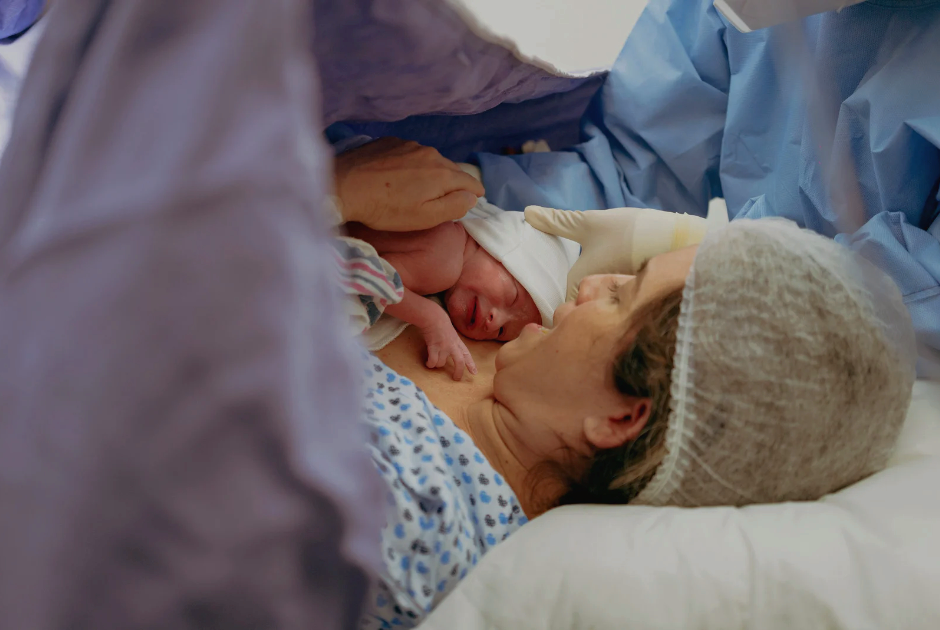
C-section deliveries have increased over the last years. In some countries, more than 40% of all births are C-sections.
Although vaginal deliveries are always the goal, it sometimes may be necessary to perform a C-section. For many women, nevertheless, recovery from this intervention is a true nightmare.
Recovery from C-section is without any doubt slower than recovering from vaginal birth. Adequate care can make this process a lot easier and can help avoid complications.
But let’s start from the beginning…
What is a C-section?
A C-section is a surgical intervention during which an incision is made in the mother’s abdomen – cutting through the different muscle layers – and the uterus, to extract the baby.
This intervention is made when vaginal birth isn’t considered safe for the mother or the baby, because of complications during pregnancy or delivery.

The purpose of a C-section is to reduce this risk and suffering of both the mamma and the baby during the delivery. It should therefore not be considered an alternative way of birthing, but a resource to avoid severe complications during the birth process: severe pathologies for the mother, dystocia, placental abruption, fetal suffering, etc.
What are the consequences of a C-section?
Even though a C-section is considered the safest procedure to solve complications during a vaginal birth and to maintain the fetus’ health, one should not forget it is a surgical intervention and that it therefore has the exact same risks as any other intervention (infections, blood loss, etc.) with the added risk of the anesthesia.
Another aspect to be taken into account is that the postoperative period after a C-section is more uncomfortable than after a natural birth.

It is also important to consider some of the consequences of a C-section that are different from those of regular surgical interventions: Pero, también deberemos considerar que algunas de las consecuencias que conlleva una cesárea distan de las cirugías que podamos sufrir:
- Alteration of the abdominal functions
- Changes to the digestive system
- Posture changes
- Pelvic pain
- Alterations of the pelvic floor
- isk of infection
- Limited movement
- Generalized pain in the lumbar and back area.
- Muscle weakness
- Adhesions
- Fibrosis
If the mother presents one of these symptoms, she may have internal adhesion caused by the surgical intervention which has caused internal tension hindering normal movement of both the muscle and the abdominal fascia.
Recovery after a C-section.
As mentioned before, a C-section is a major surgery, which means recovery will take longer than recovery from a natural birth.
Badly cured scars can furthermore cause problems in the short, medium or long term. The wound caused by the C-section implies having internal scars below the skin that affect the muscles. After the intervention, it would be ideal to have a specialized physiotherapist carry out an evaluation and follow-up to avoid adhesions and thickening of the scar, causing the scar to become hard and retracted.
Physiotherapy used different manual therapy techniques to work the skin and surrounding tissues, thusly improving mobility of the superficial and profound layers.
Recovery from a C-section using TecarEvolution
Capenergy’s second generation tecar therapy is a major help in the recovery from a C-section, as it makes the process easier and faster.

With a TecarEvolution treatment we can:
- Stimulate the generation of collagen to improve elasticity and flexibility of the scars and tissues.
- Improves vascularization
- Oxygenate the perineal muscles and relax possible reflex contracture of the pelvic floor muscles.
- Improve discomfort and pain in the area, thanks to the generation of cortisol and endorphins.
- Improves the aspect of the scar, thanks to the thermal effect of the delivered radiofrequency.
- Resolve or prevent possible adhesions.
- Improve tissue quality and shorten treatment times.
Would you like to know more about Capenergy’s tecar therapy and how it can help your patients recover after a C-section? Request a free demo!